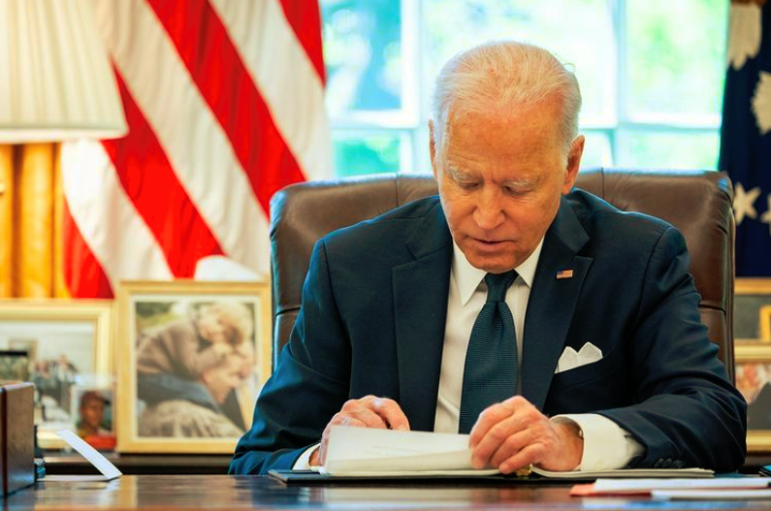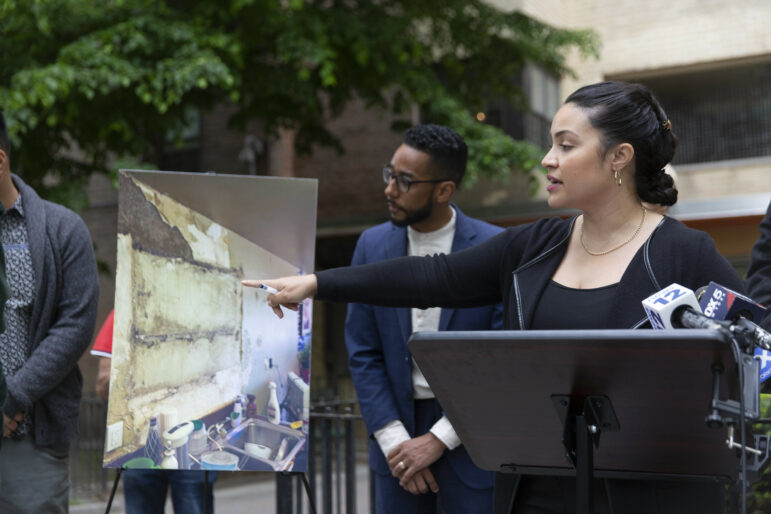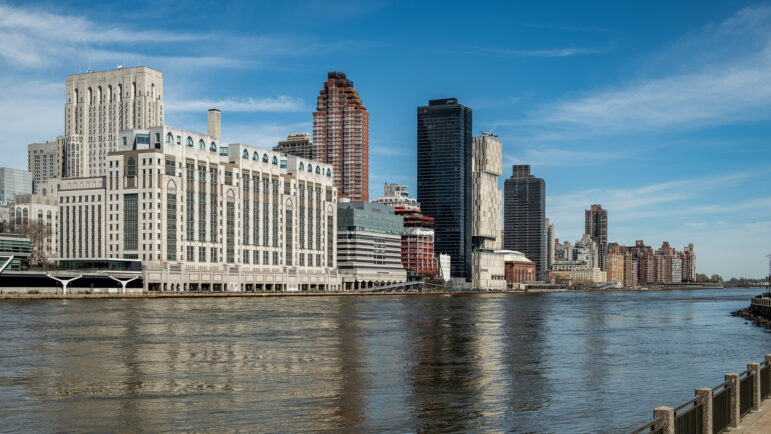“Its free market approach is an inefficient way to alleviate the affordability crisis. Really doing so would require that the government subsidize or invest more in permanently affordable housing.”

Adi Talwar
Buildings along the Manhattan waterfront.The New York City Planning Department presents the City of Yes for Housing Opportunity (“COYHO”) as a modest, incremental proposal to address the “severe housing shortage that makes homes scarce and expensive … by making it possible to build a little more housing in every neighborhood.”
But COYHO is not modest. As George Janes, an urban planner and consultant to several community boards, has extensively documented, it is the most sweeping revision since the inception of the current Zoning Resolution in 1961. Although the City Planning Commission and City Council amendments to the original proposal have reduced or eliminated some of its worst features, it will still lead to dramatic alterations of the Manhattan’s cityscape—already the densest residential area in the United States and one of the densest in the world—and will make our urban environment less livable.
COYHO will allow massive infill on tower-in-the-park campuses such as Stuyvesant Town, Peter Cooper Village, and Park West Village. Distances between buildings could be as little as 40 feet. Pursuant to a Planning Commission amendment, these new infill provisions will not apply to New York City Housing Authority (NYCHA) campuses, and the City Council Land Use Committee’s amendments have excluded recreational areas on all campuses from development. Nevertheless, the potential amount of infill remains staggering.
Whereas current zoning limits the height of the base of a tower-on-a-base building to 85 feet, roughly matching the height of adjacent tenement buildings, under COYHO the base could rise straight up to almost twice that height, 155 feet, allowing monolithic, out-of-scale structures that violate the urban design principles of contextual zoning. Changes in the rules for transferring floor area from side streets to avenues will enable taller luxury buildings, now permissible only in exchange for affordable housing, with no affordable housing in exchange. These are examples of the changes that will, over time, erode the livability and desirability of Manhattan.
If COYHO would contribute significantly to resolving the housing crisis, one might ask whether the trade-off is worthwhile. But COYHO incentivizes the production of housing, not affordable housing. Because it gives developers so many options to increase floor area without providing affordable units, the Universal Affordability Preference that COYHO also offers is unlikely to result in many new affordable units in areas where the demand for luxury housing is great.
COYHO’s advocates say that even though it does not mandate construction of any affordable housing, COYHO’s addition of market-rate units will reduce housing prices through filtering, a.k.a trickle-down. But trickle-down simply does not work where added supply only induces more demand. At best, as planner Juan Rivero has pointed out, it is a slow process. And there is no reason to expect that it will ever lead to units affordable to those making 60 percent of Area Median Income (AMI) or less. Supply-side advocate and former Deputy Mayor for Housing and Economic Development Vicki Been admits as much, conceding that “the price effects of market-rate construction may be slow to materialize and are unlikely to be sufficient to address the needs of very low-income households.”
Yet this is where the real need is. It is primarily those low-income households that are rent burdened, i.e., paying more than 30 percent of their income in rent. Rivero points out that the median rent burden of New York City households was only 29.5 percent in 2023, but for households earning less than $70,000—the median city household income—the median rent burden was 54 percent.
COYHO will not only do little to create new affordable housing; it will also further incentivize the replacement of buildings with rent-regulated apartments with much taller luxury buildings, often with fewer units. Between 1993 and 2018 New York City lost 282,000 regulated apartments, and an additional 120,000 between 2019 and 2022.
In Manhattan, there is a dire shortage of affordable housing, but no shortage of housing: census figures show that since 2010, the number of units has exceeded the number of households by between 10 and 28 percent. Citywide, the Municipal Art Society found 1.8 billion square feet of unused residential development rights within the existing zoning envelope—enough, they write, to accommodate more than a million housing units.
Late in her term as Mayor Michael Bloomberg’s Planning Commissioner, Amanda Burden told an audience: “I had believed that if we kept building … and increasing our housing supply … that prices would go down. We had, every year, almost 30,000 permits for housing, and we built a tremendous amount of housing, including affordable housing …. And the price of housing didn’t go down at all.”
In recent years, prices have climbed steeply even though regulations remain little changed. Construction of new units has kept pace with population growth and household formation. Indeed, census data show that between 2020 and 2023, the city’s population fell by 544,190, yet rents rose by 30 percent and home prices rose 16 percent. There is a housing affordability crisis, not only in New York but also in other cities, and not only in the United States, but throughout the developed world. In the European Union, between 2010 and 2022, house prices rose by 47 percent and rents by 18 percent.
This evidence suggests that limits on height and density are not the predominant cause of this crisis, much less the only cause; removing those limits to build supertall luxury housing in the densest county in the nation is not the solution. Economists and analysts like Josh Ryan-Collins and Samuel Stein, among many others, have shown that this crisis is the result of growing inequality, and the fact that land and housing have become lucrative investment vehicles. As Laurence Fink, CEO of BlackRock, told the crowd at the Global Megatrends Conference in Singapore in 2015, “The two greatest stores of wealth internationally today are contemporary art … and apartments in Manhattan, apartments in Vancouver, in London.”
This fuels a cycle where rising demand leads to increases in prices leads to more investment and more demand. This is not some crazy left-wing idea. Two-time Nobel laureate Joseph Stiglitz writes, “Much of the growth in inequality [is] related to an increase in rents and land values. … [L]and is a store of value. The value of land today is largely dependent on its expected value tomorrow, ad infinitum. This means that land prices are largely untethered.”
“Buy land. They aren’t making it anymore,” Mark Twain reportedly said. Land is a natural monopoly, and developers and landlords have market power. Supply siders would have us believe that there is no limit to the amount of density that can be added to meet ever-increasing demand. They care little for the urban design, architectural and environmental values that make cities attractive in the first place. Harvard economist Edward Glaeser, a leading supply-side advocate, says that people oppose tall buildings only because they obstruct their views. Pay those people off, he says, and the problem is resolved. As to historic preservation, he says that only extraordinary buildings, and maybe the city of Paris, are deserving of protection, and that in New York City, the number of buildings subject to preservation should be limited to, say, 5,000.
This trivializes the concerns of urban planning experts and residents alike. It fails to acknowledge that the urban environment is a common good that will not be protected by a free market. As noted urbanist Richard Florida put it, “radical deregulation of land use and housing runs the risk of killing off the proverbial goose that lays the golden egg.” Florida is right. In exchange for a purported one-time fix, COYHO threatens to kill the goose.
This brings us back to the question: is it worth it? While COYHO contains some positive elements, such as its revisions to address the “missing middle,” too much of it is bad urban design and bad housing policy. Its free market approach is an inefficient way to alleviate the affordability crisis. Really doing so would require that the government subsidize or invest more in permanently affordable housing.
If COYHO is to be enacted, it should be amended to limit or eliminate the most extreme changes and to require some affordable housing through mandatory inclusionary zoning, a modest measure that has been successfully implemented in California, Florida, Massachusetts, New Jersey, Westchester County and elsewhere. In this way, the public would recapture at least a portion of the windfall increase in land values resulting from the upzoning of land.
John Low-Beer is a member of the Executive Committee of the City Club of New York, of counsel to Kirby McInerney LLP, and an adjunct professor at Cornell Law School.









